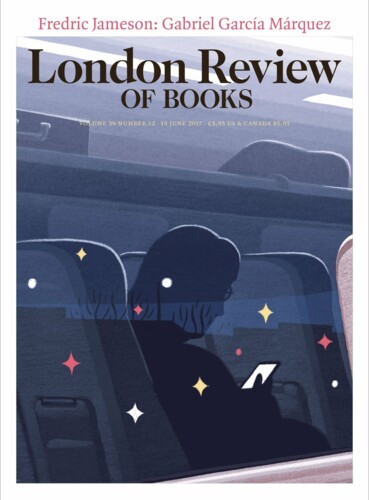‘Why had we come to the moon?’ the narrator of H.G. Wells’s The First Men in the Moon (1901) asks. ‘The thing presented itself to me as a perplexing problem.’ The novel features in The Moon exhibition at the National Maritime Museum, alongside other books that anticipated the space age: Jules Verne’s From the Earth to the Moon (1865) and Lucian of Samosata’s True Story, written in the second century AD. It begins with a ship blown to the moon by a whirlwind; a war between Phaethon and Endymion ensues, enabled by giant spiders. Aubrey Beardsley was one of the illustrators of an 1894 English edition.
Anna Aslanyan
Anna Aslanyan’s book, Dancing on Ropes: Translators and the Balance of History, came out in 2021.
The Tyburn Angling Society purports to have been established by a royal charter issued by King Edgar the Peaceable in 959 AD, though there are no records of its existing before the 21st century. The River Tyburn, culverted in 1750, still flows underground from Hampstead to Westminster. The society claims to want to ‘daylight’ the river, bringing it back up to the surface. It commissioned a map in the early 2000s showing the proposed course, which would cut a swathe through ‘£1 billion worth of property’. The buildings marked for demolition included Buckingham Palace and the offices of Westminster City Council, which promptly rejected the proposal.
‘Where the fuck is the government?’ posters on Waterloo Bridge said. A road sign at the northern end flashed: ‘Global warming at work.’
La Disparition, a lipogrammatic classic, turns 50 today. You probably know who it’s by; if not, you can look it up to find out why I’m unwilling to say who did it. From its first publication on 29 March 1969, this book built a cult following. It’s primarily famous for what’s missing from it, a basic but important thing that forms a part of words you can’t usually do without. Staying strictly within this tight constraint, it says what it wants to say about its protagonist, Anton Voyl, and his vanishing act – a conundrum for his companions – in a grippingly ludic, rigidly formulaic way.
The fantasy of a universal language is at least as old as the story of the Tower of Babel.
Read anywhere with the London Review of Books app, available now from the App Store for Apple devices, Google Play for Android devices and Amazon for your Kindle Fire.
Sign up to our newsletter
For highlights from the latest issue, our archive and the blog, as well as news, events and exclusive promotions.

